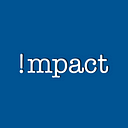Diversity is integral to any organization, especially ones that serve diverse populations. People of color face unique challenges that must be acknowledged and addressed, and an organization that understands these challenges and experiences is best equipped to serve them. Further, diversity enhances the perspective in any team — the gathering of skilled individuals with unique cultures enriches operations and fosters refined perspectives in decision-making.
We’re in conversation with June Collison, a values oriented, positive impact creator. Driven by solutions and highly experienced as a diversity advocate, June is a seasoned senior healthcare executive with over 25 years of experience.
You are known to be a highly experienced diversity advocate. In the past, you have rebuilt entire leadership teams to make them highly diverse, effective, and accepted. What is the importance of diversity? In your opinion, how can it transform the way in which a business functions, increase profitability, and bring together different minds to lead towards innovation and success?
“Diversity is so powerful. It brings more richness and knowledge to any team or organization. I’ve always believed in diversity, but my various experiences over the years have strengthened my commitment to diversity and inclusion. I’ve had experience being the only person of color on an all-white team, before. I’ve also had experience on far more diverse teams. When comparing these experiences, one of my greatest takeaways is that the thought processes were far different. Teams with people of various genders and backgrounds, bring new ideas and ways of thinking to teams, causing the whole team to think differently and with a more open perspective.
“One of my greatest concerns when I was developing my career was lack of diversity within organizations, especially when those organizations were in very diverse cities. I thought to myself, ‘How can you have an all-white executive team, especially in a city like San Bernardino with a population of primarily Black and brown-skinned people?’ It doesn’t work, especially when recruiting and expanding.
“A team or organization that is all-white and lacks diversity can seem hostile to the greater community and incoming employees. When you’re inviting new team members, Black and brown people will not feel comfortable being surrounded by and led by people who do not look like them. They will feel afraid to come into an organization that, they feel, doesn’t value people with similar backgrounds to them. Further, this will cause a domino effect — these individuals will spread their concerns to their community, and this will negatively impact your organization’s volume and bottom line. A diverse team, especially in a diverse environment, is essential.
“Unfortunately, when I began assembling a diverse team, I began hearing complaints from white colleagues that I was bringing in ‘all these Black people’. I always said to them that I always hire the right fit for the organization and the best person for the position, regardless of their identity; however, we cannot be working in a hospital and serving a population that is made up of Black and brown individuals as an organization lacking people that look like the communities. By doing so, we’d lack the cultural connection and understanding necessary to perform effectively.
“I was the first person of color on the CASA board, which is the Court Appointed Special Advocates for children in California. In my first meeting, I remember noticing that the rest of the team was all-white. In the last few years, the team began to prioritize DEI more — involving members in DEI programs, inviting DEI speakers, and beginning a book club for reading books on diversity and equity. I was asked by white team members — ‘June, why aren’t you in our book club to read these books on DEI? I had no idea what people of color went through!’ I responded, ‘I don’t have to read a book to understand the experiences of people of color, because I live it every day.’ Understanding that team members weren’t aware of the experiences of people of color strengthened my resolve for DEI — how can leaders and organizations understand how to meet the needs of their team members, consumers, and organizations if they don’t know about the experiences Black and brown people face?
“My team is consistently evolving to bring in people of various backgrounds and perspectives, and today I am proud to be working with a team of diverse individuals, including people of various ethnicities and of the LGBTQ+ community. As a leader, I ensure that I listen to and encourage my team members — I consistently make the effort to support each of them in their various identities. For example, I’m thrilled to say that our organization will be participating in the Pride Parade for the first time this year!
“We bring different knowledge, cultures, and processes with diversity. It enriches everyday operations and strategizing, and we’re better equipped to discern accurate and successful decisions. The various cultures people carry with them come together to enrich the team’s perspective as a whole. This is why diversity has to be intentional — hiring individuals that are skilled yet hold a unique perspective is key.
Thanks for sharing, June.
